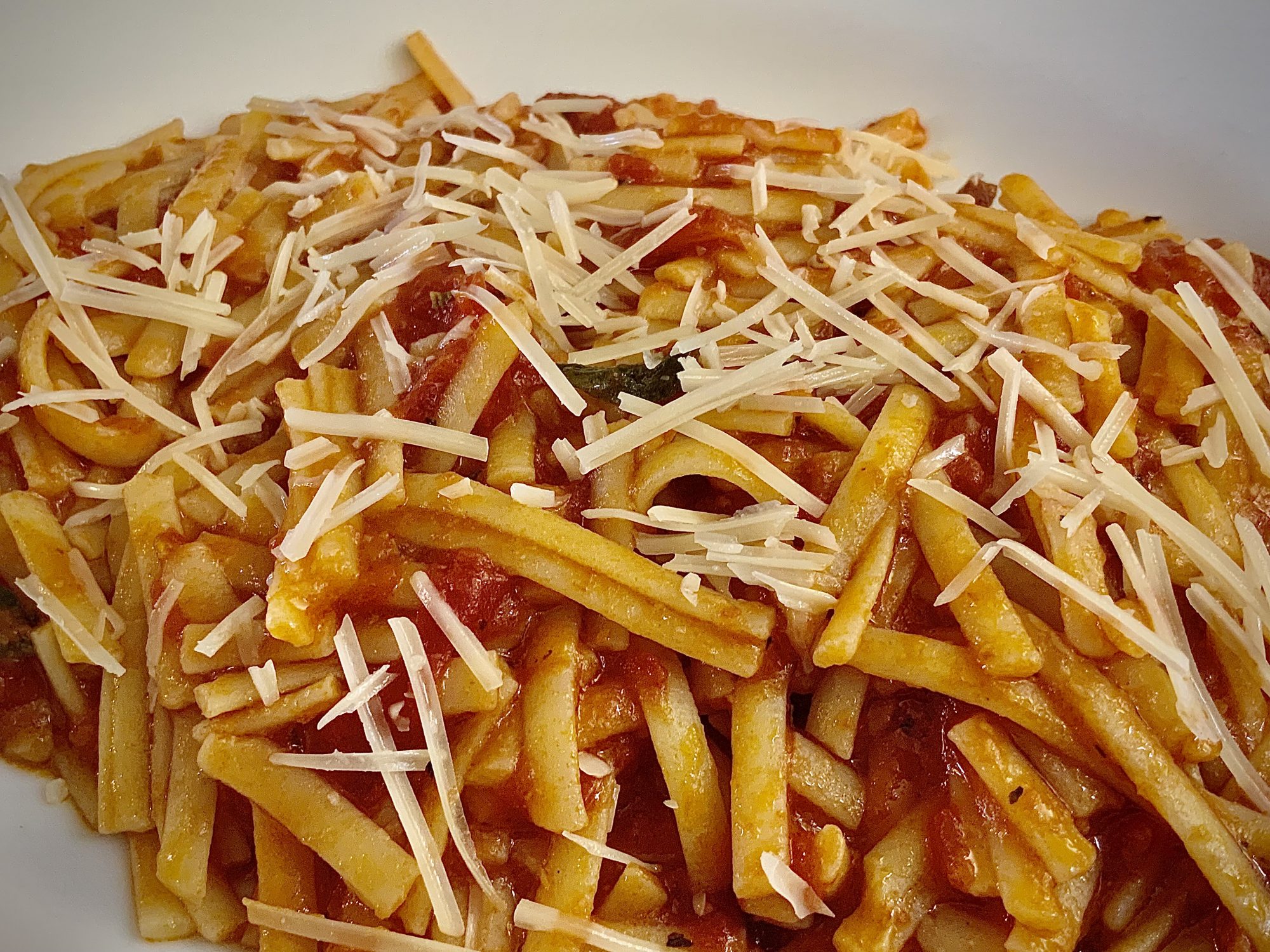

Fill a large stock pot two-thirds full with water and heat over high to bring to a boil. Once you see the water start to steam, add 3 Tbsp. salt. It looks like a lot, but it is not and the reason why restaurant pasta tastes better than the stuff you usually make.
Drain a 28-oz. can of whole peeled tomatoes contents into a colander over medium bowl. (If you are tempted to use diced tomatoes, don't, it will not come out right.) With your washed hands, poke a hole in the tomatoes and shake to drain liquid and seeds from the insides of each tomato, reserving liquid. Shake colander well to separate the solids from all the juices and encourage liquid to drain; set aside.
Mash the 4 cloves of roasted garlic into almost a paste.
Pasta pot close by, heat 3 Tbsp. oil in a large deep side pot over medium heat. Add mashed garlic and cook, stirring often with a wooden spoon, about 2 minutes.
Stir in red pepper flakes, then add drained tomatoes and increase heat to medium-high. You going to want to sear them pretty good. Cook, stirring occasionally, until tomatoes are darkened in color, browned and caramelized in spots, and starting to break down, 7-9 minutes. Don't get in a hurry here. Mash some with the back of the wooden spoon to form a chunky paste.
Begin and perform both steps below at the same time.
Add reserved tomato liquid to pot and stir to combine. Season with a pinch of salt, throw in basil and oregano sprigs, and reduce heat to a simmer. Cook, stirring occasionally, until liquid is reduced and sauce is thickened, 8–10 minutes.
Add pasta to pot of boiling water and spin pasta several times with tongs to prevent clumping. Cook pasta, spinning occasionally. You are going to want to cook the pasta just short of al dente. I start checking a couple minutes before the earliest al dente time on package. It will finish cooking in the last steps. Reserve 1 cup of pasta water.
Using tongs, transfer pasta from pasta pot sauce pot, allowing water on pasta into sauce. (do not drain ) Crank heat under sauce up to medium-high and pour in 1/2 cup reserved pasta water. Finishing your pasta in your sauce once; will change the way you serve pasta. Every piece of pasta is coated perfectly in your luscious sauce.
Cook pasta, tossing constantly, until sauce coated and with heat reduced, let pasta absorb liquid, about 1 minute. If you start to look a little dry, just add another splash of that pasta water; if they look too wet, move off heat, cover and just wait a bit for some more liquid to absorb.
Add in half of the Parmesan cheese, tossing constantly, until it has melted into the sauce. Add more pasta water, a couple of tablespoons at a time, if needed—it should be plenty saucy while you're incorporating the cheese so it emulsifies into the sauce properly. You want the sauce to be saucy but still be thick enough to coat the pasta.
If not done already, remove pot from heat and stir in 2 Tbsp. butter until melted. (Don't skimp on this step, butter brings everything together in the sauce.)
To plate, divide into pasta bowls and garnish with chopped basil leaves, red pepper flakes more Parmesan if desired.
0 servings